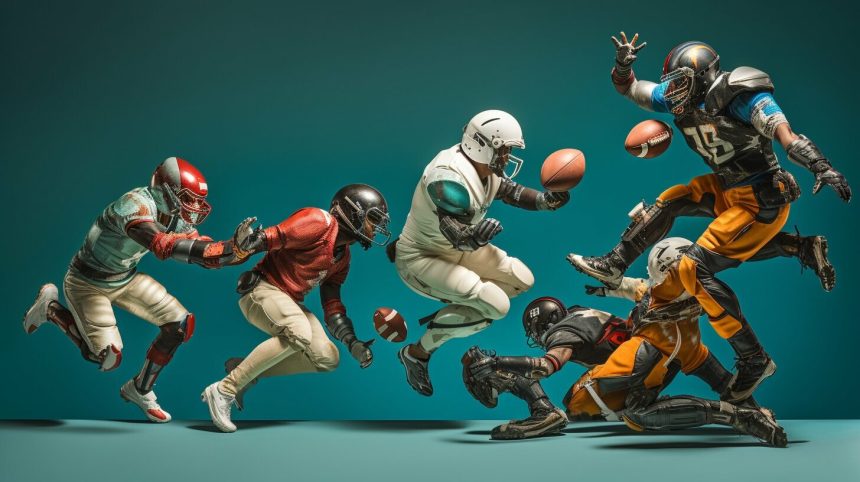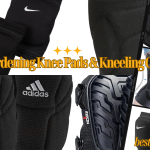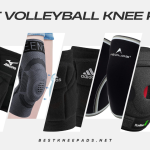Participating in sports is an excellent way to stay healthy, build camaraderie, and hone athletic skills. However, sports also come with inherent risks that can result in injuries, both minor and severe. It is essential to be aware of potential health and safety issues at every level of sports to avoid harm and promote safe play.
Whether you are a beginner or a professional athlete, understanding the risks involved can help you take the necessary precautions to stay safe. From recreational sports to competitive leagues, it’s crucial to know the potential health and safety issues that can arise and how to address them.
Key Takeaways
- Sports participation comes with certain risks that can result in injuries.
- It’s essential to understand the health and safety issues at every level of sports to avoid harm and promote safe play.
- Beginners and professional athletes alike must be aware of potential risks and take necessary precautions.
- Knowing the common injuries, selecting proper equipment, conditioning, and addressing environmental and psychological factors can help minimize risks and keep athletes safe.
- Safety should always be a priority in sports to ensure a long and fulfilling athletic journey.
Common Injuries in Sports
Sports participation is an excellent way to stay active and healthy. However, it comes with a risk of injury. Understanding the most common injuries that athletes may encounter is essential in promoting sports safety. Here are some of the most frequent sports injuries:
- Sprains and strains: These are the most common sports injuries and occur when ligaments or tendons get overstretched or torn. It can happen in any sport and typically affects ankles, knees, and wrists.
- Fractures: Bone fractures can occur when there is a high impact or force applied to the bone. It can result in a complete or partial break of the bone, depending on the severity.
- Concussions: A concussion is a type of traumatic brain injury that can occur from a blow to the head. It can cause a range of symptoms, including headache, dizziness, and confusion.
- Overuse injuries: Overuse injuries can occur when athletes participate in repetitive motions, leading to stress on the body’s tissues and joints. Common overuse injuries include tendonitis and stress fractures.
It’s essential to recognize the signs and symptoms of these injuries, so athletes can seek prompt medical attention. Early intervention can help prevent further damage and ensure a quicker recovery.
Prevention and Treatment
Preventing sports injuries is essential for minimizing the risk of harm to athletes. Coaches, healthcare professionals, and athletes themselves can take steps to reduce the likelihood of injuries. Here are some tips to prevent sports injuries:
- Warm-up and stretch before activities to prepare the body for physical exertion.
- Wear appropriate gear and equipment for the sport, such as helmets, shin guards, and pads.
- Gradually increase the intensity and duration of activities to avoid overuse injuries.
- Stay hydrated to prevent muscle cramps and fatigue.
- Take rest breaks and allow time for recovery between activities.
If an injury does occur, prompt treatment is vital for a successful recovery. Athletes should seek immediate medical attention and follow their healthcare provider’s recommendations for recovery.
By understanding common injuries, promoting prevention, and seeking prompt treatment, athletes can participate in sports with confidence and minimize the risk of harm.
Importance of Proper Gear
Using proper gear is essential for promoting sports safety. It is important to wear the right equipment to prevent serious injuries that may occur during sports activities. Wearing appropriate gear can help reduce the risk of head, face, eye, mouth, and teeth injuries, among others.
Depending on the sport you are participating in, different types of gear may be required. For example, if you are playing football, you may need pads that can protect your shoulders, hips, and knees. If you are involved in baseball, wearing a helmet and a mouthguard may be necessary to ensure you are protected while playing.
The quality and condition of sports equipment are also critical for your safety. Old or poorly maintained equipment can easily fail and cause injuries. It is essential to inspect and clean your gear regularly to ensure no parts are broken or damaged. Replace any worn-out gear with new ones to ensure optimal protection from potential hazards.
Remember, even the best gear cannot guarantee total protection from all kinds of injuries. It is still important to use proper techniques, follow safety guidelines, and practice good sportsmanship to prevent accidents and injuries.
Training and Conditioning
Proper training and conditioning are vital for sports performance and injury prevention. Athletes must have strength, speed, endurance, and agility to compete at their best. Without appropriate training and conditioning, athletes risk injury and suboptimal performance.
Strength training is crucial for building muscle and reducing the risk of injuries. Weightlifting, resistance training, and bodyweight exercises can help athletes develop stronger bones, joints, and muscles. It also helps to reduce the risk of strains, sprains, and other soft tissue injuries.
Flexibility exercises are equally important for sports safety. Stretching helps improve range of motion, reduce muscle tension, and prevent muscle strains. It also helps improve blood flow and reduces the risk of blood clots.
Cardiovascular fitness is essential for endurance sports such as running, cycling, and swimming. Endurance training helps athletes build stamina, increase oxygen uptake, and reduce fatigue.
It’s essential to balance training with rest and recovery. Overuse injuries, including stress fractures and tendinitis, can result from excessive training and insufficient recovery. Athletes must listen to their bodies and take necessary breaks to avoid injuries and burnout.
Properly conditioning the body for sports performance can help athletes reach their full potential, prevent injury, and prolong their athletic journey.
Environmental Factors
Environmental conditions can pose significant health and safety risks for athletes. Extreme temperatures, humidity, playing surfaces, and lighting conditions are all factors that can affect players’ well-being.
For example, playing in high heat and humidity can lead to dehydration, heat exhaustion, and even heat stroke. In contrast, cold temperatures and icy surfaces can cause slips, falls, and frostbite.
It’s crucial to adapt to different environments and take necessary precautions to ensure athletes’ safety. This can involve adjusting game times or locations, modifying the length and intensity of practices, and providing shade, hydration, and cooling stations.
Additionally, the type of playing surface can also impact the risk of injury. For example, playing on artificial turf can increase the risk of certain injuries, such as ACL tears, compared to natural grass.
Overall, it’s important to consider environmental factors when planning and participating in sports activities. By taking appropriate measures to minimize risks, athletes can enjoy playing sports safely and comfortably.
Psychological Aspects in Sports Safety
Physical health is not the only concern in sports – psychological aspects also play a crucial role in sports safety. Athletes need to have a positive mindset and be mentally resilient to cope with the physical and emotional demands of their sport.
One significant psychological aspect is managing stress and anxiety. Athletes may feel pressure to perform well, which can lead to stress and anxiety, affecting their well-being and performance. Coaches and team leaders can help athletes learn coping mechanisms such as deep breathing, visualization, and positive self-talk to manage stress and anxiety effectively.
Another critical psychological aspect is promoting a positive team environment. Athletes spend a lot of time with their teams, making it essential to have a supportive and positive atmosphere. A toxic environment can increase the risk of injury and hinder performance. Therefore, coaches and team leaders must work on building a culture of respect, positivity, and teamwork.
Lastly, mental health issues such as depression and anxiety can impact athletes. It’s crucial to recognize and address these issues to support athletes’ overall well-being, which can positively impact their sports performance. Coaches and team leaders can provide resources and support for athletes who may be struggling with mental health issues to ensure they receive the proper care and attention they need.
Conclusion
Sports offer numerous benefits to individuals of all ages, including physical fitness, social interactions, and personal growth. However, participation in sports also comes with a certain degree of risk, including possible injuries that can be severe or even life-threatening. Therefore, promoting safety should be a top priority in every sports environment, regardless of the level of play.
By following the guidelines outlined in this article, athletes, coaches, and healthcare professionals can work together to minimize the risk of harm and provide a safe and enjoyable experience for all involved. From understanding common injuries to using proper gear, focusing on training and conditioning, considering environmental factors, and addressing psychological aspects, the goal of sports safety can be achieved.
Remember, safety is not an afterthought but a fundamental aspect of sports participation. By prioritizing sports safety, athletes can aim for their best performance while minimizing the risk of harm. Let us continue to prioritize safety in sports, ensuring that athletes can enjoy a long and fulfilling athletic journey free from preventable injuries.










